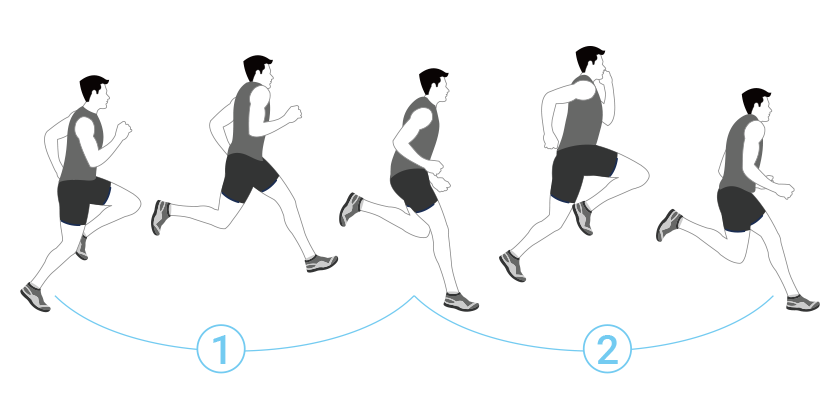
Cadence
Cadence is the number of steps you are able to take per minute. Generally speaking, a high cadence helps to reduce the load on the leg muscles, but places a relatively large burden on the heart and lungs; a low cadence is the opposite.
Garmin Empowers Every Avid Runner! Run Your Best With Garmin!

Whether you're new to running or an experienced runner, this article will help you quickly understand the settings and functions of your Garmin running watch! By monitoring key items before, during, and after your run, you can better understand your performance level and what you can do to maintain a good training regimen and continue to improve.
Through Firstbeat Analytics technology, Garmin combines physiological science with computational algorithms using Heart Rate Variability (HRV) sensor data to provide the most advanced analysis and metrics in the areas of stress, sleep, maximal oxygen consumption (VO2 Max), training status/load, training effectiveness, and respiration rate. This empowers users in making more efficient and data-driven decisions during training and recovery.

If you want to run more efficiently, set your heart rate zones first! Setting your heart rate zones is super easy. It just takes 2 simple steps!
Want to improve your running techniques even more? In addition to the basic heart rate and pace data, there are many other Running Dynamics Data that you should know during your run!
Running Dynamics Data

Cadence is the number of steps you are able to take per minute. Generally speaking, a high cadence helps to reduce the load on the leg muscles, but places a relatively large burden on the heart and lungs; a low cadence is the opposite.
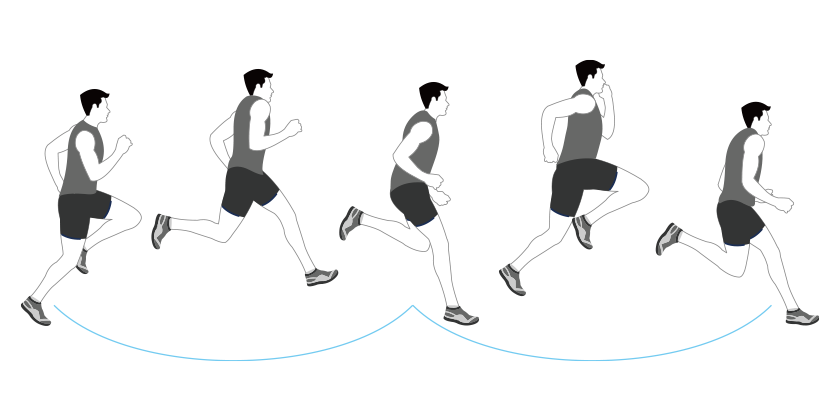
Stride length is the distance between strides. Stride length is highly correlated with muscle strength and joint mobility, with more advanced runners usually having larger stride lengths.
Advanced Running Dynamics

With a running dynamics pod or heart rate monitor, you can collect running motion data so you can run with more skills.
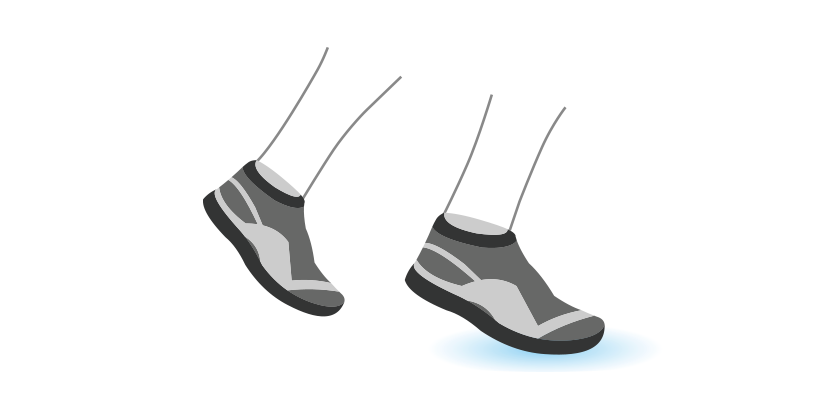
Ground contact time is the amount of time that your foot is in contact with the ground on each step. At the same speed, veteran athletes usually have a shorter ground contact time (under 200 ms). If you want to shorten the ground contact time, you can try jumping rope and some flat and short hill sprint training.
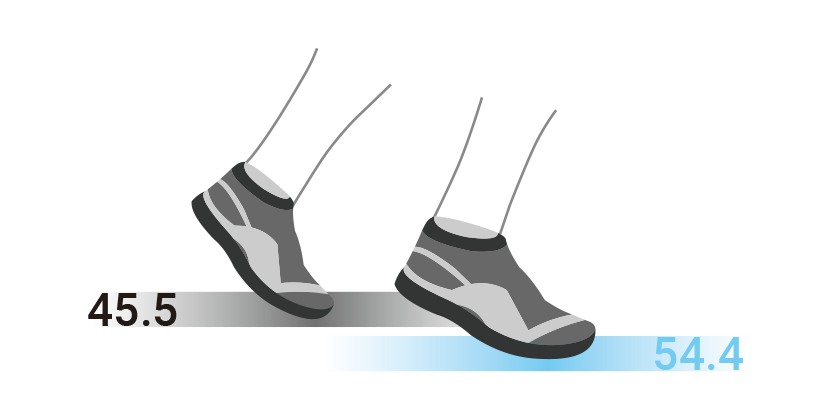
GCT Balance is the ratio between your left and right foot ground contact time. Normally, the left and right foot ground contact times should be very close, at 50:50; if the difference is more than 2%, you may be close to an injury. You should check your running posture and muscle strength.
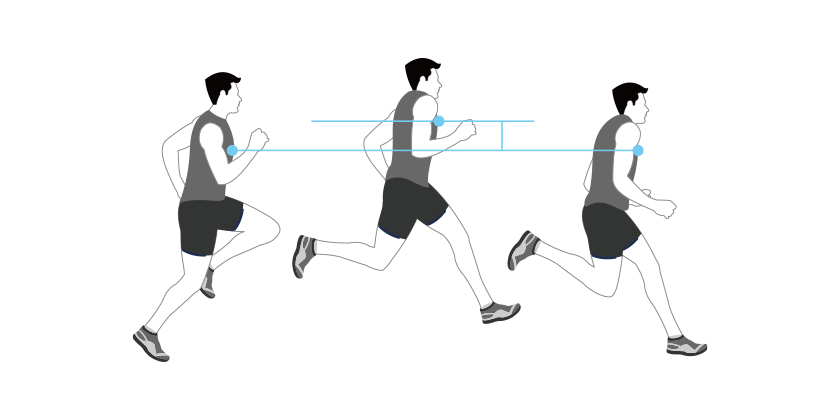
This reflects the amount of “bounce” in each step while you run. In general, more experienced runners tend to have lower vertical oscillation. However, faster paces often come at a cost of somewhat higher vertical oscillation.
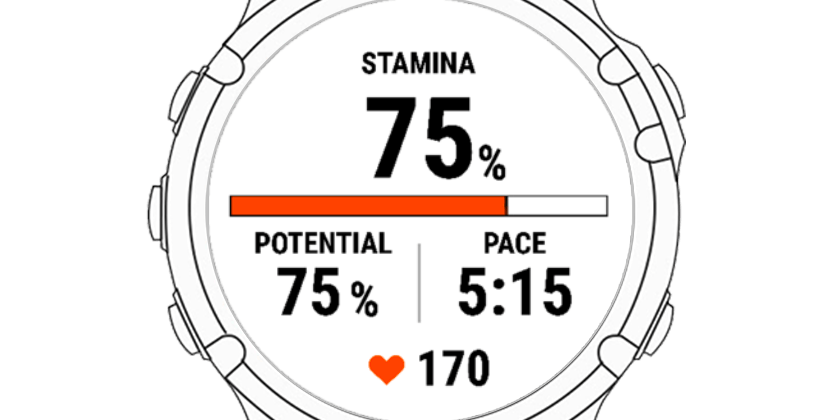
In long-distance races such as half-marathons, full marathons or ultramarathons, use Real-Time Stamina to keep track of your physical exertion and adjust your pace immediately so that you do not run out of energy before you reach the finish line, or so that you have energy reserves to achieve better results.
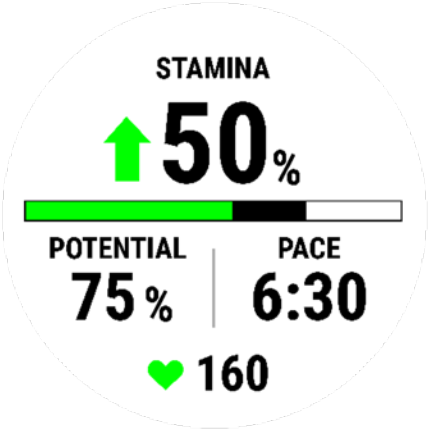 |
Green - Running more relaxed, stamina is recharging. |
|---|---|
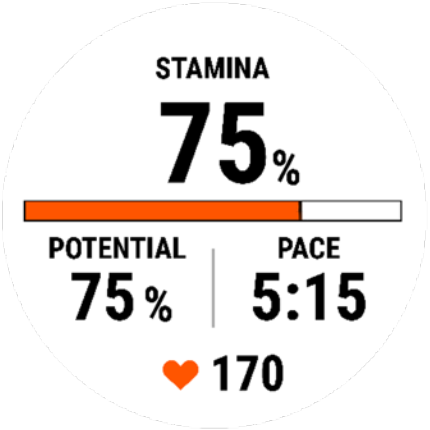 |
Orange - Moderate level of effort, stamina is steady. |
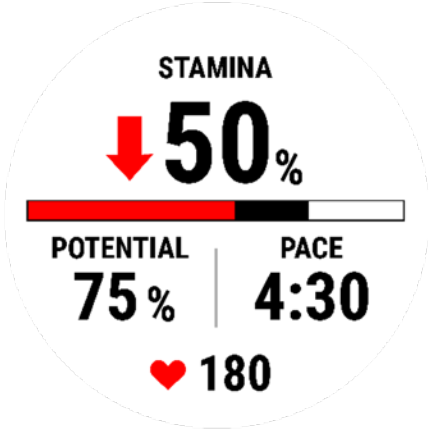 |
Red - Running with a lot of effort, stamina is depleting. |
| Black - The upper limit of stamina recovery. | |
After each run, your Garmin watch not only stores the recorded data, it also analyzes the effectiveness of each training session. It also tracks and analyzes your accumulated training load and fitness status over time, giving you further recovery time and daily training recommendations.
Is the current training volume appropriate?
With a good grasp of the training load, you can clearly know whether you are training enough or too much. In the past, we could only rely on our body's senses, which were often not so precise, but through the watch, we can now completely quantify the state of training.
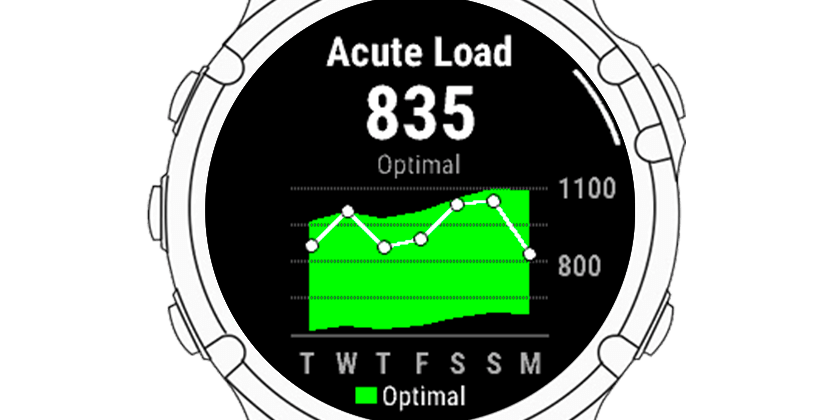
After each run, your Garmin watch will estimate the training load based on the Excess Post-Exercise Oxygen Consumption (EPOC) converted from the heart rate zones, and show whether the total load for the past 7 days is within the ideal range.
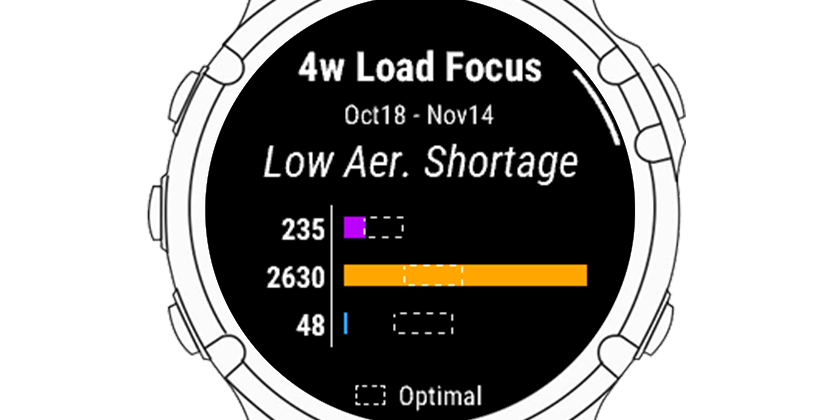
Some watches can break down the training load for the past 4 weeks into 3 different items and indicate the optimal range with a dotted box.
If you mainly jog for too long, your watch will show too much low aerobic load; if you run mainly with intervals, you may have too much anaerobic load and not enough low aerobic load. Therefore, a balanced and appropriate amount of practice is the only way to ensure effective physical progress!
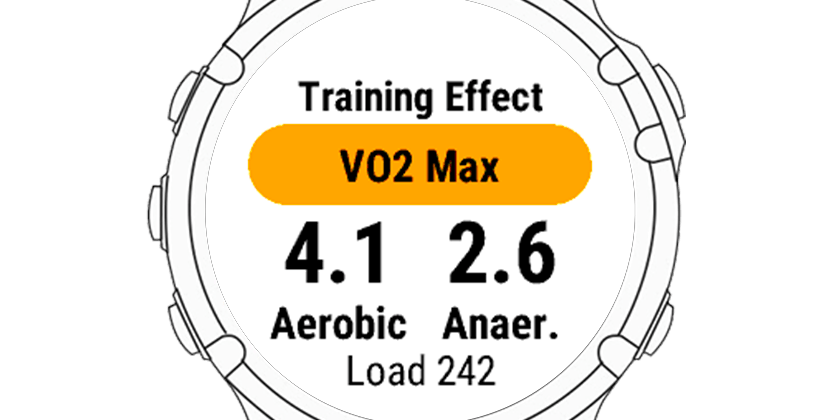
At the end of each training session, your Garmin watch will rate the main benefits of the training as well as the aerobic and anaerobic training effects based on the training load.
| Recovery | Low Aerobic |
|---|---|
| Base | |
| Tempo | High Aerobic |
| Threshold | |
| VO2 Max | |
| Anaerobic Capacity |
Anaerobic |
| Sprint |
| 0 | None |
|---|---|
| 1 | Minor |
| 2 | Maintaining |
| 3 | Improving |
| 4 | Highly Improving |
| 5 | Overreaching |
In order to improve your running performance, aerobic and anaerobic capacity are both important, and both should not be neglected.
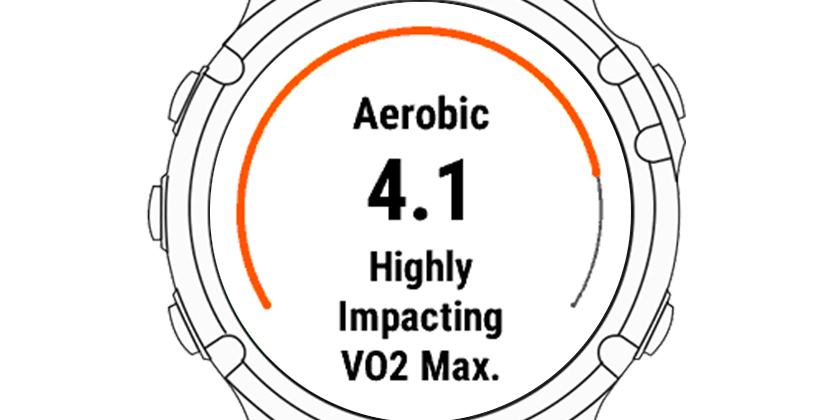
With aerobic training, the body will gradually improve in the following aspects:
| Stronger Left Ventricle | A stronger heart can pump more blood and get more oxygen to the muscles. |
|---|---|
| More Microvessels | The increased density of microvessels in the muscles helps them exchange more oxygen and energy. |
| Increased Fat Burning Effect | Mitochondria can be thought of as the “power plant” of the cell that is fueled by fat. Jogging increases the efficiency of the mitochondria, making the body an efficient fat-burning machine. |
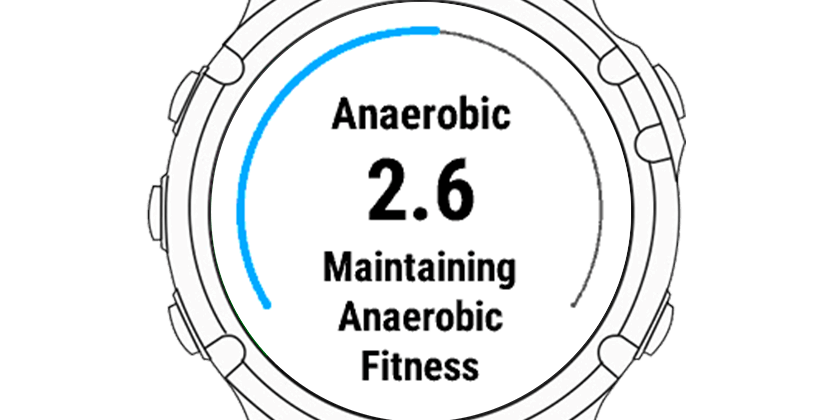
With anaerobic training, the body will progressively improve its performance in the following aspects:
| Improve High-speed Sprinting Ability | Anaerobic training increases the explosive power of the muscles, which is better in the final phase of a race. |
|---|---|
| Increases Fatigue Resistance | Through anaerobic training, the body will learn to keep going under fatigue. |
Remember! The better you train, the more load you put on your body, and the more rest you need to allow your body to be ready for the next challenge.
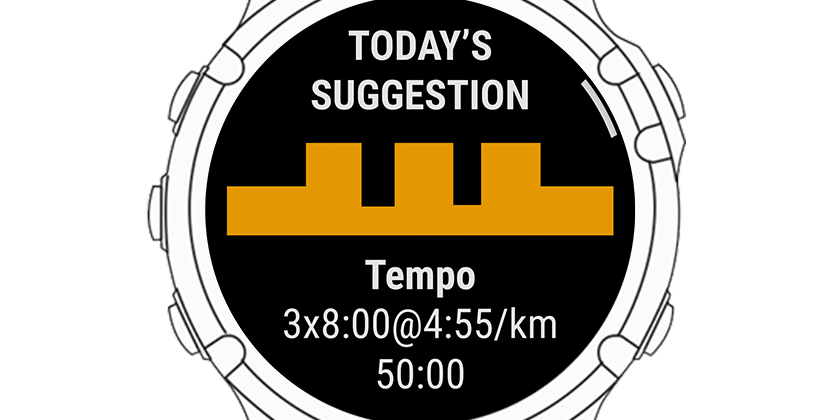
Not sure how to optimize your training? Then refer to daily suggested workouts! Garmin watches harness the power of the latest sports science to combine your training load, recovery time, sleep data, and recent training history to provide you with the best running suggestions so you can optimize your training to better effect and improve your fitness level.
What is my fitness level?
To know your current fitness level, just wear a running watch for more than 7 days and let it record your VO2 Max and estimated finish time so you can better understand how to set your personal goals.
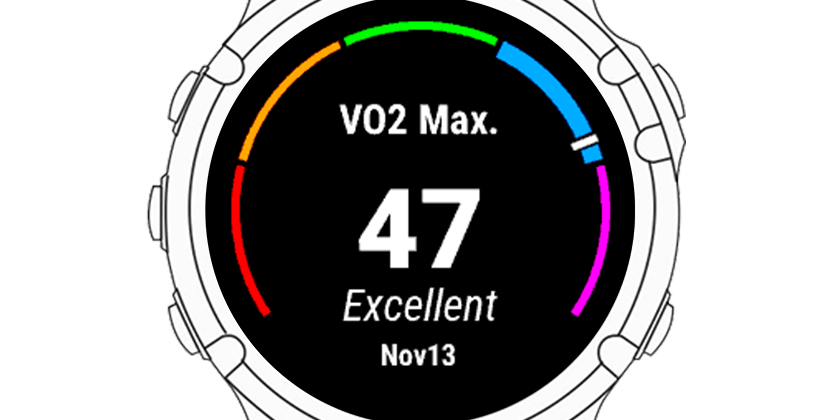
Oxygen consumption is the amount of VO2 Max required per kilogram of body weight during exercise, and the upper limit of a person's oxygen intake is their VO2 Max. Usually the more fit a person is, the higher his or her VO2 Max is.
Since VO2 Max needs to be measured in a lab, and is often difficult to carry out, Garmin and Firstbeat experts harnessed the power of an algorithm to calculate a runner's virtual VO2 Max as a reference for long-term fitness progress.

Based on your current fitness status, your Garmin watch provides a target race time. Estimates include 5K, 10K, half-marathon and marathon distances. Runners can compare these with their current times to know where they perform well and where they need to work on.
How long should I rest?
Training is important and recovery is even more important, but how long should I rest? When should I train again? These are questions that many runners have. After a run, progress often happens during recovery. Through a rational recovery recommendations, Garmin works with you to achieve your best.

Garmin watches will estimate the recovery time you need based on your training load, physical fitness, training effects, and daily health data (stress index, sleep quality).
Garmin currently provides an estimated upper limit of recovery time of 4 days. When the time returns to 0, it means that the body has recovered to its best condition. However, when training, you can do some low-intensity exercises, and you don’t have to wait until the recovery time is completely 0.
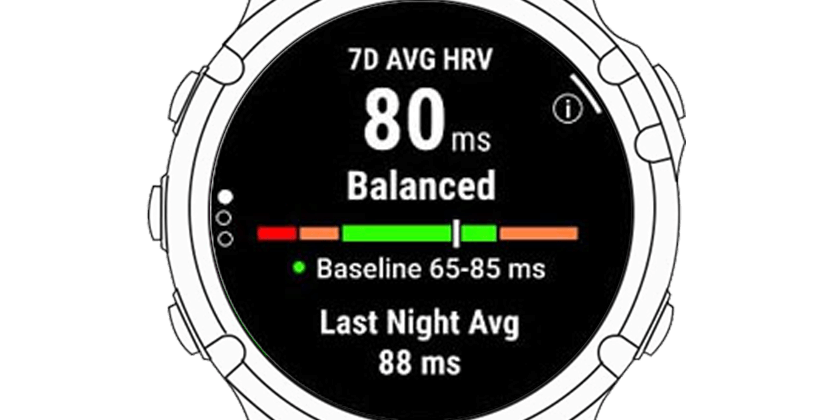
Heart rate variability (HRV) refers to the variation in the interval between successive heartbeats. It helps you record, analyze and understand how your body responds to the challenges of daily activities and training. Use the HRV status feature to help adjust your training intensity and recovery status.
Garmin's HRV status is measured while you sleep and then compared to your personal HRV baseline to provide you with a 7-day average and status of your HRV. A balanced HRV status means your body is in a stable condition, with a good balance of training and recovery, and good cardiovascular health, so keep it up! HRV Status includes the following:
| STATUS | DESCRIPTION |
|---|---|
| Balanced | Stable body condition, good training and recovery balance, good cardiovascular fitness, please keep it up. |
| Unbalanced | The 7-day average HRV is higher/slightly lower than your baseline range. |
| Low | The 7-day average HRV is significantly lower than your baseline range. |
| Poor | Your HRV baseline range is lower than the fair standard for your age group. |
What is my training status?
As a runner, you must have been in these situations before: when an important race comes, either the training is not in place, or the body is in a constantly exhausted state, making you unable to perform as well as you did in practices. In fact, training is a very profound subject to grasp. When should you intensify your training routine? When should you reduce and rest more? When are you peaking? The training status feature will provide you with clearer answers.
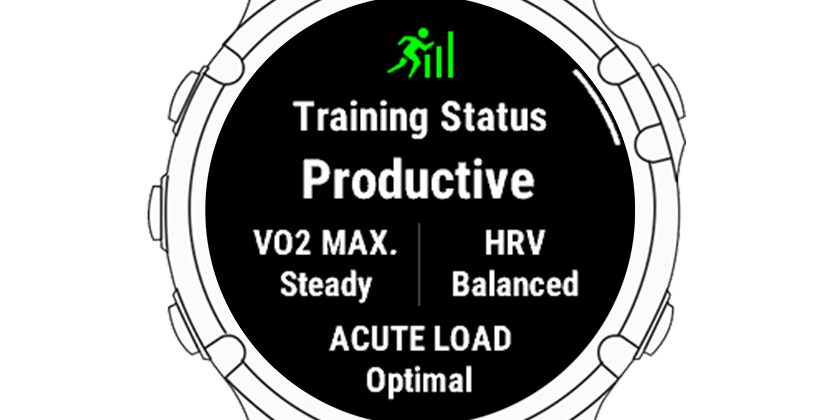
Garmin watches use Firstbeat algorithm to calculate the training status, and refer to changes in VO2 max and training load trends, and divide it into 7 different training statuses to help runners adjust in real time.
| STATUS | DESCRIPTION | SUGGESTIONS |
|---|---|---|
| Overreaching | The training load is obviously overloaded compared to the past and your own physical capacity, and there is a risk that your body may not have time to recover. | It is recommended you should take more rest. |
| Peaking | The body is in very good condition, maintaining good fitness while recovering adequately. | The peak period is usually very short, so do not overtrain. |
| Productive | With a good training status, your fitness is improving as your training load increases. | The overall training is going in the right direction, but don't overlook the importance of rest and recovery. |
| Maintaining | Your training load is relatively stable compared to the past and is sufficient to maintain basic fitness. | If you want to improve your fitness, try adding more variety in your training routine. |
| Recovery | A lower training load than before that allows the body to rest and fully recover. | Do not increase the amount of training suddenly. Do it gradually to avoid injury. |
| Unproductive | Your training load remains high or continues to increase, but your fitness level is decreasing. | Take more rest, and pay extra attention to causes of stress, as well as ensure adequate sleep and nutrition. |
| No Status | Insufficient data, wear your watch for 1 to 2 weeks to obtain relevant data. | |
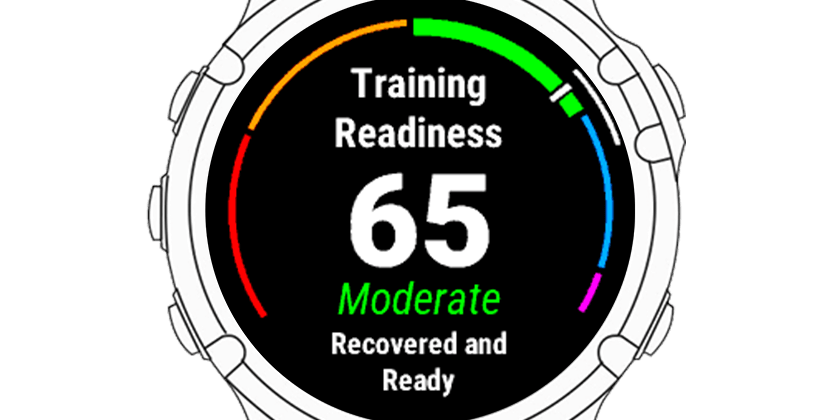
Rest is the first step of a long journey ahead; Training at an overly high-intensity level before your body is ready can be counterproductive. Check your Training Readiness on your Garmin watch, along with the detailed analysis provided by the Garmin Connect app, to help you understand when it's appropriate to do high-intensity training and when you need to lower the intensity to let your body rest, so you can achieve better training results. Training Readiness considers your sleep score, recovery time, HRV status, acute load, recent sleep quality, and stress level.
*Please wear your Garmin device continuously for 3 consecutive days, including sleep.
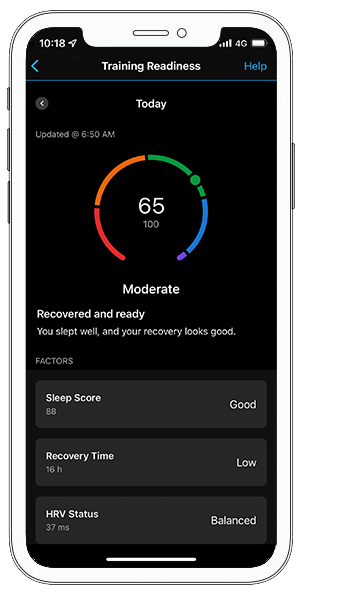
| 1~24 | Poor |
|---|---|
| 25~49 | Low |
| 50~74 | Moderate |
| 75~94 | High |
| 95~100 | Prime |
In-depth study and analysis of your running data